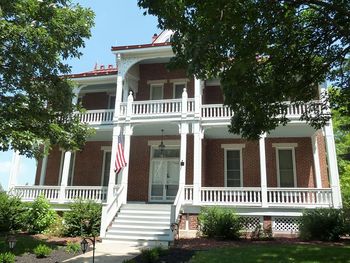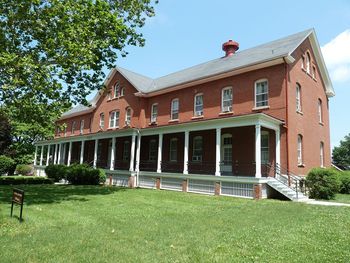Fort Leavenworth
|
Fort Leavenworth (1827-Present) - Colonel Henry Leavenworth, with the officers and men of the 3rd U.S. Infantry from Jefferson Barracks at St. Louis, Mo., established Fort Leavenworth in 1827. The post is named after Colonel Henry Leavenworth. Active military installation in Leavenworth County, Kansas. Also Known as Cantonment Leavenworth, Camp Lincoln (3) and Fort Sully (3).
Fort Leavenworth History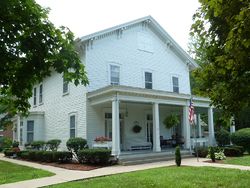 For 30 years, Fort Leavenworth was the chief base of operations on the Indian frontier. In 1839, Colonel Stephen Watts Kearny marched against the Cherokees with 10 companies of Dragoons, the largest U.S. mounted force ever assembled. Throughout the Mexican-American War, Fort Leavenworth was the outfitting post for the Army of the West. During these early years, soldiers from Fort Leavenworth protected wagon trains hauling supplies over the Santa Fe Trail, Oregon Trail, and other trails to most forts, posts, and military camps of the West, some as far as the Pacific Ocean. When the Kansas Territory was organized in 1854, Governor Andrew Reeder set up executive offices on the post and lived for a short time in the quarters now known as "The Rookery".
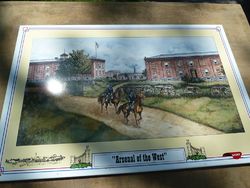 ArsenalIn 1858, an ordnance depot was established on Fort Leavenworth and by 1860 it had become the 138‑acre Leavenworth Arsenal. In 1861 the arsenal was threatened by Confederate sympathizers and several companies of infantry were ordered to Leavenworth Arsenal from Fort Kearny (2) to protect it. The arsenal remained in operation throughout the U.S. Civil War and continued until 1872 when its functions were transferred to the Rock Island Arsenal. Two stone buildings were constructed to support the arsenal functions and these buildings became quartermaster buildings when the arsenal moved. The two arsenal buildings still survive on the post and are known as Sherman Hall and Sheridan Hall. The two buildings were joined with an auditorium, sally port, and clock tower in 1908 and the central addition became Grant Hall. A third story was later added to each building.
U.S. Civil War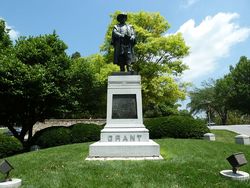 At the outbreak of the U.S. Civil War, Camp Lincoln was established on the post as a reception and training station for Kansas volunteers. News of the approach of Confederate Gen. Sterling Price in 1861 prompted the construction of Fort Sully, a series of earthworks for artillery emplacements on Hancock Hill, overlooking what is now the Fort Leavenworth National Cemetery. In August 1861, General Sterling Price and his pro-Confederate Missouri State Guard scored a victory at the Battle of Wilson’s Creek in Missouri, and fears spread that Price would continue northwest and attempt to capture Fort Leavenworth. Price made it as far as Liberty, fifty miles from the Fort, before he turned south and retreated into Arkansas. The earthworks were probably constructed beginning in 1861 when Colonel Alfred Sully was the commandant at Fort Leavenworth, and when Price made his first forays into the area. The ridge crest was fortified with earthen embankments, ramparts, gun emplacements, and rifle pits. During its long history, the post was never subject to enemy attack. For three decades following the war, the Army's chief mission was control of the American Indian tribes on the Western plains. Between 1865 and 1891, the Army had more than 1,000 combat engagements with Apache, Modoc, Cheyenne, Ute, Nez Perce, Comanche, Kiowa, Kickapoo, and other tribes.
Post Civil War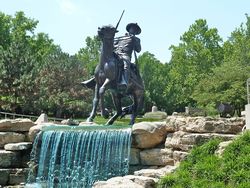 In 1866, the U.S. Congress authorized the formation of four black regiments—the 24th U.S. Infantry and 25th U.S. Infantry Regiments and the 9th U.S. Cavalry and 10th U.S. Cavalry Regiments. The 10th U.S. Cavalry Regiment was formed at Fort Leavenworth under the command of Colonel Benjamin H. Grierson. Today, a monument stands at Fort Leavenworth in tribute to the "Buffalo Soldiers" of the 9th U.S. Cavalry and 10th U.S. Cavalry Regiments. In 1881, Gen. William T. Sherman established the School of Application for Cavalry and Infantry. That school evolved into the U.S. Army Command and General Staff College at Fort Leavenworth. World War IWorld War I was the first opportunity to evaluate the impact of Sherman's school. Graduates excelled in planning complex American Expeditionary Forces operations. By the end of the war, they dominated staffs throughout the AEF. In the years between the World Wars, graduates included such officers as Dwight D. Eisenhower, Omar N. Bradley (Cullum 5356) and George S. Patton (Cullum 4795). World War IIDuring World War II, some 19,000 officers completed various courses at Fort Leavenworth. By the end of 1943, commanders and staffs of 26 infantry, airborne, and cavalry divisions had trained as teams at the school. In 1946, the school was given its current name. In 1959, the college moved to the newly built J. Franklin Bell Hall on Arsenal Hill. In 1985, the Harold K. Johnson wing was added to house the Combined Arms and Services Staff School. Eisenhower Hall was dedicated in 1994. Classes for the School of Advanced Military Studies and the School for Command Preparation, as well as the Combined Arms Research Library, are located in Eisenhower Hall.
Sources:
Links:
Visited: 23 Jun 2010 Picture Gallery
| ||||||||||||||||||||||||||||||||||||||||||||||||||||||||||||||||||||||||||||||||||||||||||||||||||||||
